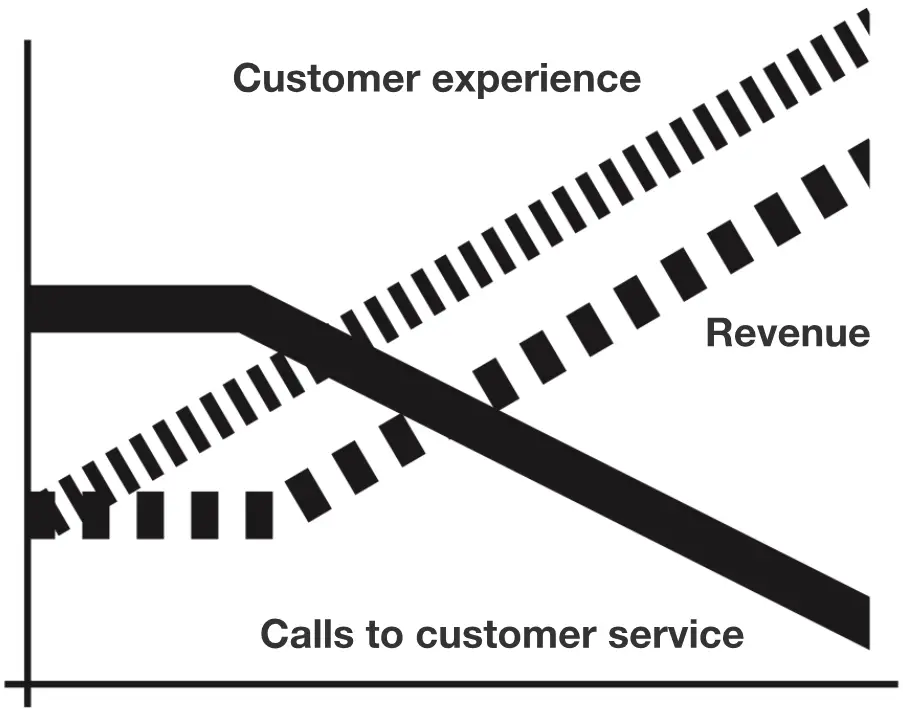How do you convince your boss that customer experience is something worth investing in? Can you prove the business effects and value of improving the customer experience? How do you get buy-in from colleagues, your manager, or the board? Read this blog to learn how to build customer business case.
Linking the customer experience to tangible value
There is a reason for the saying “what gets measured gets managed”. And this is extremely relevant when it comes to customer experience, whose effect on business value still gets questioned. Or considered to be too vague. And vagueness is not a winning concept when arguing for resources in a boardroom.
You need to be able to show the economic outcomes of the differences in customer experiences, by linking to figures like key performance metrics, efficiency and profitability. In short, you need to build a customer experience business case that connects your customer experience efforts to value for your organization. This means a well-thought-out customer experience business case can be pivotal.
The customer experience business case
The customer experience business case differs from one organization to another, and yours should be based on your organization’s conditions, challenges, and objectives. Here are some aspects to guide you on how the case can be built.
The first thing to define is what measurable business-critical outcomes will be affected by improving the customer experience in your organization: is it cost reductions, increased revenue, market share, or other?
A common starting point is the costs. For instance, in the public sector for instance, the case is most often about increased value for the citizens at a lower cost. However increased revenue or market share are also common starting points, especially in a detailed customer experience business case.
Three key steps in creating the customer experience business case
1 – First you need to understand the costs that really matter. What metrics are important in your organization? Furthermore, are there costs thats actually is a problem? What performance figures are on the agenda of the management? Check the list (A) below as inspiration.
2 – Next step is to understand the cost drivers of a good or a bad customer experience. Below is a list of customer benefits (B) as inspiration. What is the connection between A and B now? What relationships can be indicated? Be aware that all business cases contain guesses and assumptions. Can the connection between A and B be made and accepted internally? It’s crucial for any customer experience business case to highlight these links.
3 – The third step is to make sure that you can measure and follow up the improvements in the list (B). You have connected them to your figures in list (A). For instance, can a reduction in the amount of calls to customer service be measured? Will the improvement reduce the cost, and if so, how? Will improvement increase revenue, and if so, how? Can the relationship between the cost of the amount of calls to customer service and customer satisfaction rate be clearly demonstrated?

Visualize the connection between the customer experience, the costs, and the revenues. The visualization can become a cornerstone of your customer experience business case.
What are the benefits of using the customer journey map?
A: What figures are business-critical in your organization right now?
Of all the performance figures that are measured in your organization, which are the ones that matter?
- Revenue and growth
- Costs
- Operating profit
- Market value
- Variation in cash flow
- Risks and the number of failed initiatives
- Employee commitment and employee satisfaction
- Recruitment
- Confidence in management and organization
- Process efficiency
B: Customer benefits of customer experience-leading organizations
- Customers show greater confidence
- Customers prefer that organization’s services to others
- Customers stay longer
- Customers invest more in services and products
- Customers return and upgrade more often
- Customers are less price sensitive
- Customers speak positively and recommend
- Customers praise staff
- Customers do not talk badly and do not discourage others
- Customers understand the service and rarely ask
- Customers show greater patience when mistreated and complain less in their dealings with your customer experience business.
- Customers are cheaper to serve
Additional reading on how to build your customer experience business case
Gartner’s five steps to a robust Customer Experience business case
McKinsey on Linking the Customer Experience to value
Harvard business revue on The Value of Customer Experience, Quantified
By Sabina Persson


